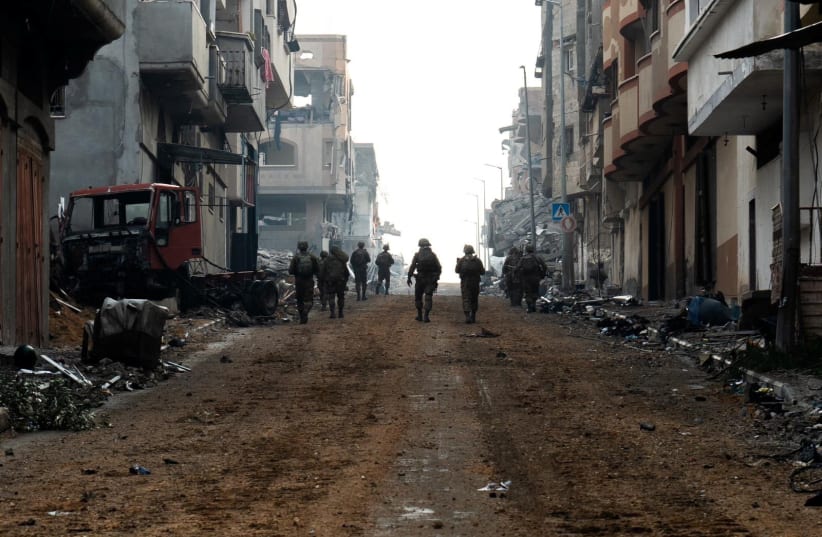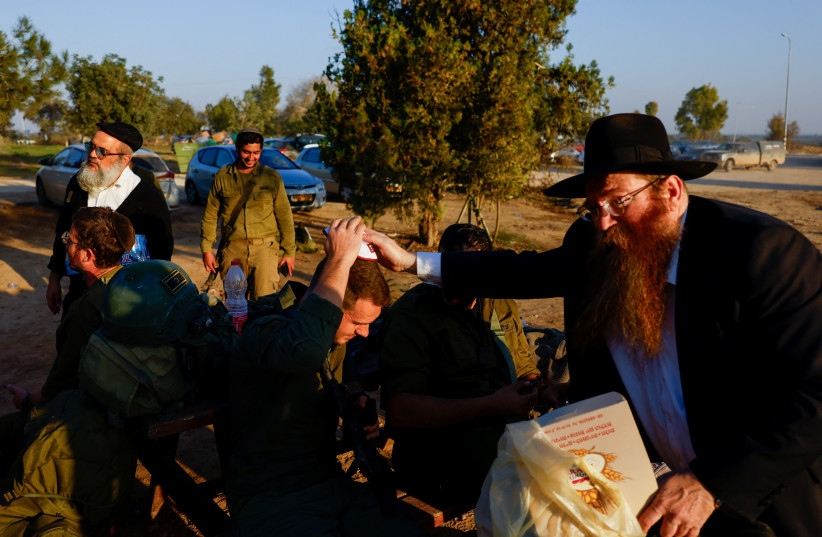MIRI EISIND

The widening gap between Israel and its allies
The first challenge that Israel faces is the widening gap between Israel’s perception of the day after and that of its allies and potential partners who see control of Gaza passing into Palestinian hands while Israel withdraws from all of the Gaza Strip, back to the borders of October 7.
In Israel, top priority is given to security considerations, with an emphasis on effective control of the Philadelphi Route along the Gaza-Egypt border to prevent Hamas from regaining its strength. Israel also seeks to establish a buffer zone and continue its efforts toward the complete demilitarization of the Gaza Strip. In practice, there will be no full withdrawal. Therefore, it would be ideal to reach an agreement on the security framework within the Gaza Strip even before the intensive battles cease.
Gaza may descend into political chaos
The second challenge involves the transition period from high-intensity conflict to the phase in which a permanent arrangement will come into effect. Anticipating and addressing this transition period is necessary at the present time; we cannot wait for the results of the military campaign.

A rabbi brings sweets as Israeli soldiers rest near the Gaza Strip border in southern Israel, December 19, 2023.
The reason for this is the fear that Gaza may descend into political chaos. But here’s the dilemma: an Israeli withdrawal without a coordination plan in place and the passing of the baton will lead to a governance vacuum in Gaza.
What can be done to prevent such a vacuum during the transition period? There is no wholly satisfactory option. Israeli control is imperative. This entails an occupied territory with an administrative structure governed by the local population in Gaza.
There does not appear to be another alternative, since it is highly unlikely that an external party will agree to manage civilian life in the Gaza Strip as long as Israel maintains its presence and military control. Israel must proactively prepare for effective control – both military and civilian (in cooperation with local Palestinian leadership) – and at the same time formulate an orderly exit strategy.Advertisement
Can Israel kill Hamas for good?
THE THIRD challenge entails confronting the fact that Hamas is a hybrid terrorist organization, with military, political, and social wings. Even if Israel destroys Hamas’s military capabilities in Gaza, how can the organization be prevented from integrating into the future civilian leadership? How can it be stopped from continuing to be an influential player in Gaza? Can all Hamas members be banned from taking on key positions? Should they all be prosecuted?
Given Hamas’s sustained control of the Gaza Strip since 2006, eradicating its influence is anticipated to be a lengthy process spanning several years that will extend beyond the transition period. Therefore, to begin addressing the organization’s influence and the ideology it espouses, it is necessary to undertake action through several channels: a governmental alternative with a horizon for economic and political development; efforts to delegitimize Hamas and its guiding ideologies; and the development of a strategy to counter radicalization processes in other sectors.
A humanitarian catastrophe in Gaza
The fourth challenge revolves around responsibility for the humanitarian situation in the Gaza Strip. This is a challenge that already exists, and one that is expected to accompany Israel throughout the period ahead. As Israel’s presence in the area persists, so does its responsibility for the basic needs of the Gazan population. Israel should continue its efforts to establish an operational infrastructure and a mechanism for cooperation with aid organizations (even if they are not friendly).
The broader Middle Eastern dynamics
The fifth challenge lies in recognizing that the conflict is part of a broader regional dynamic. Hamas poses a common challenge to Israel and its moderate allies in the Middle East. Hamas has always maintained a presence in the West Bank and Lebanon, as well as in Jordan, Syria, and more distant Muslim countries. The destruction of the Hamas regime and its military capabilities in Gaza will not eliminate the organization in other sectors, and moreover, its allies in the Shi’ite axis are active, and constitute a continual threat.
Hezbollah’s principal interest is to be considered an active partner in the Palestinian struggle, while diverting Israel’s attention to prevent a military campaign against it in the region. Any solution for the Gaza Strip, whether temporary or long-term, must take into account the broader geopolitical landscape.
No comments:
Post a Comment